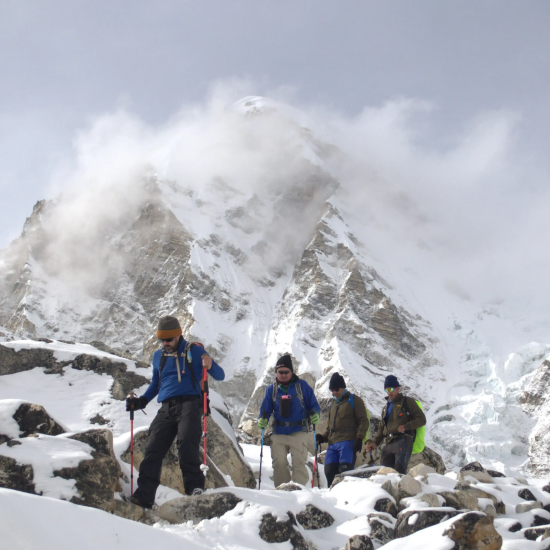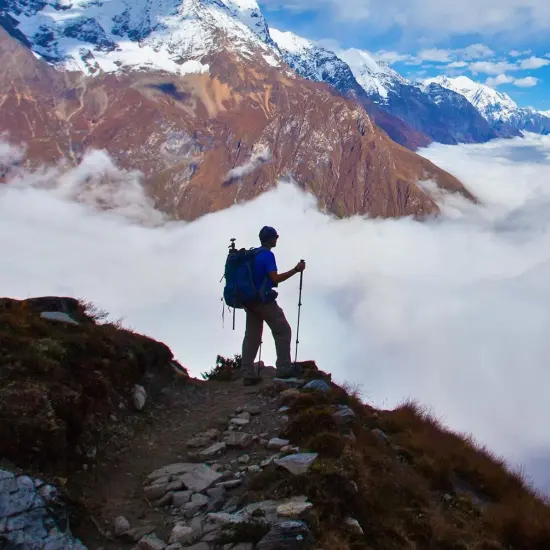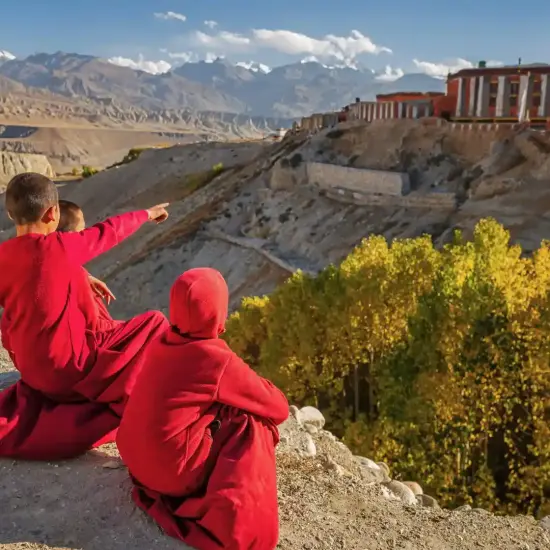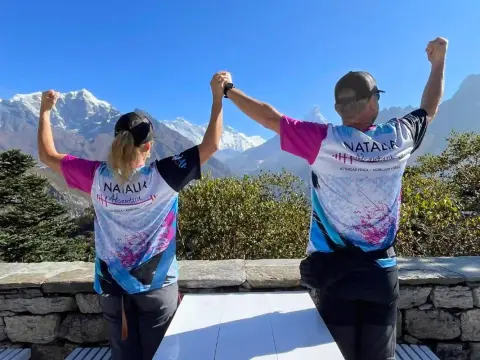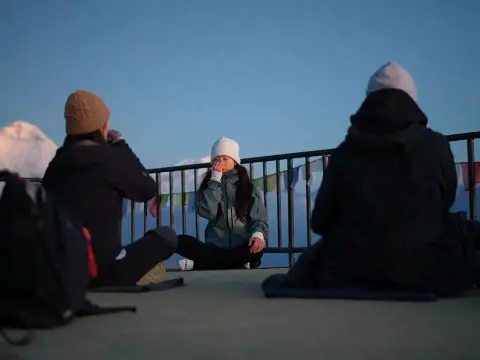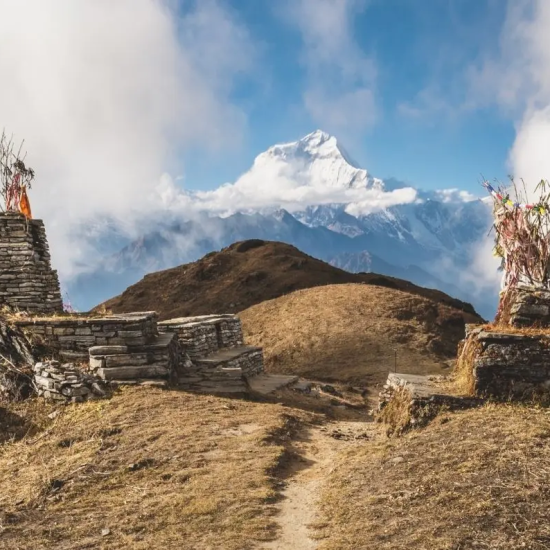The Kanchenjunga Circuit Trek is an epic adventure through eastern Nepal’s remote wilderness, guiding you to both the northern and southern base camps of Mt. Kanchenjunga (8,586m)—the world’s third-highest mountain. This route is physically demanding and best suited for trekkers with previous high-altitude experience.
Compared to popular routes like the Annapurna and Manaslu Circuits, the Kanchenjunga trail is wilder, more remote, and significantly less crowded. If you’re looking for a raw Himalayan journey filled with solitude, natural beauty, and deep cultural encounters, this trek is the perfect fit.
Beyond Kanchenjunga itself, this mountain region is home to an impressive collection of peaks: Yalung Kang (8,505m), Kambachen (7,903m), Jannu (7,710m), Jongsong (7,483m), Kabru (7,353m), Tent Peak (7,365m), and The Twins (7,350m), with many others exceeding 6,000m. The area also features five major glacier systems, with some flowing into Sikkim and others feeding Nepal’s Tamor River.
What Makes the Kanchenjunga Circuit Trek Unique?
Imagine waking up to the towering white flanks of the Yalung Glacier, surrounded by pristine wilderness. This trek is not only scenic but steeped in myth—locals often share tales of the elusive Yeti believed to roam the region. The atmosphere here is truly untouched.
You'll enjoy views of iconic peaks like Mt. Jannu, Tent Peak, and Kambachen—and on a clear day, you may even glimpse Mt. Everest, Makalu, and Lhotse in the distance. The experience is unforgettable, both in landscape and cultural richness.
What a Typical Day Looks Like
On this teahouse-based trek, you’ll stay in cozy mountain lodges with communal dining halls and basic twin rooms (shared toilets). The quality varies by altitude and remoteness, with fewer comforts the higher you go.
Morning: Wake up early and enjoy a hot breakfast—options include porridge, rice pudding, eggs, and toast. Our porters will already be preparing for the day.
Trekking: We begin around 7:00–8:00 AM with a relaxed pace. You’ll have time to take photos, enjoy the scenery, and visit villages.
Lunch: Stop at a teahouse for dal bhat, momos, fried rice, or pasta—served with hot drinks.
Afternoon: Trek until around 3:00 PM and check in at your lodge. Enjoy tea and snacks.
Evening: Dinner includes soup and a main course like dal bhat, momos, or Sherpa stew. After a briefing for the next day, you can relax, read, play cards, or rest.
Best Time to Do the Kanchenjunga Circuit Trek
The trek is best undertaken during:
Spring (March–May): Rhododendrons and wildflowers are in full bloom, and the weather is mild.
Autumn (October–November): Crystal-clear skies and stable conditions make this the most popular season.
Avoid the monsoon season (late May–September) due to heavy rainfall, slippery trails, and potential landslides. Winter is extremely cold and not recommended unless you are highly experienced and prepared.
How Difficult Is the Kanchenjunga Circuit Trek?
This trek reaches altitudes of up to 5,143 meters and covers rugged, high mountain terrain. It’s remote, physically challenging, and suited for those with prior multi-day trekking experience. Expect long days of hiking with steep ascents, altitude changes, and basic accommodation.
Key challenges include:
Remote, off-the-grid terrain
Unpredictable weather and cold temperatures
High passes and altitude risk (AMS)















 General FAQs
General FAQs  Kanchenjunga Circuit Trek Difficulty
Kanchenjunga Circuit Trek Difficulty  Best Time to Trek Kanchenjunga
Best Time to Trek Kanchenjunga  Weather & Temperature
Weather & Temperature  Packing and Prep
Packing and Prep  Visa & Arrival
Visa & Arrival  Temperatures on Everest Trek
Temperatures on Everest Trek  Kanchenjunga Trek Cost & Expenses
Kanchenjunga Trek Cost & Expenses  Kanchenjunga Trek Guide
Kanchenjunga Trek Guide  Accommodation
Accommodation  Health and Safety
Health and Safety 






































